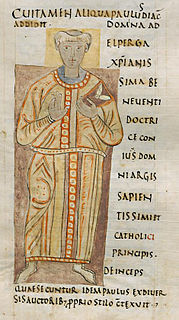Biography
Feletheus was the son of Flaccitheus, king of the Rugii and founder of the Kingdom of the Rugii. His brother was Ferderuchus. Feletheus was married to the Goth Gisa, who was probably the cousin of the Amal Ostrogothic king Theodoric the Great. After the death of his father, probably in 475, Feletheus succeeded his father as king of the Rugii. Their territory at the time was based in Lower Austria. In 476, Feletheus supported Odoacer and his Scirian and Herulian allies in the overthrow of the Roman Emperor Romulus Augustus. Feletheus was a close confidant of Severinus of Noricum. After the Eastern Roman Emperor Zeno attempted to create conflict between the Rugii and Odoacer, Feletheus executed his nephew Fredericus, who supported Odoacer. Odoacer subsequently invaded the Kingdom of the Rugii, utterly defeating them at a battle near present-day Vienna. Feletheus and his wife were captured, and executed in Ravenna in 487. Two years later, under his son Frideric, the Rugii joined the Ostrogothic king Theodoric the Great, who invaded Italy and defeated and murdered Odoacer in 493.
Flaccitheus was the founder of the Kingdom of the Rugii.

The Kingdom of the Rugii or Rugiland was established by the Germanic Rugii in present-day Austria in the 5th century.

The Goths were an East Germanic people, two of whose branches, the Visigoths and the Ostrogoths, played an important role in the fall of the Western Roman Empire through the long series of Gothic Wars and in the emergence of Medieval Europe. The Goths dominated a vast area, which at its peak under the Germanic king Ermanaric and his sub-king Athanaric possibly extended all the way from the Danube to the Don, and from the Baltic Sea to the Black Sea.
This page is based on this
Wikipedia article Text is available under the
CC BY-SA 4.0 license; additional terms may apply.
Images, videos and audio are available under their respective licenses.
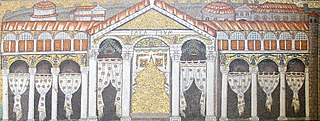
The Ostrogoths were the eastern branch of the older Goths. The Ostrogoths traced their origins to the Greutungi – a branch of the Goths who had migrated southward from the Baltic Sea and established a kingdom north of the Black Sea, during the 3rd and 4th centuries. They built an empire stretching from the Black Sea to the Baltic. The Ostrogoths were probably literate in the 3rd century, and their trade with the Romans was highly developed. Their Danubian kingdom reached its zenith under King Ermanaric, who is said to have committed suicide at an old age when the Huns attacked his people and subjugated them in about 370.

Flavius Romulus Augustus, known derisively and historiographically as Romulus Augustulus, was the Roman emperor who ruled the Western Roman Empire from 31 October 475 until 4 September 476. He is often described as the "last Western Roman emperor", though some historians consider this to be Julius Nepos. His deposition by Odoacer traditionally marks the end of the Roman Empire in the West, the end of Ancient Rome, and the beginning of the Middle Ages in Western Europe.

Theoderic the Great, often referred to as Theodoric, was king of the Ostrogoths (475–526), ruler of Italy (493–526), regent of the Visigoths (511–526), and a patrician of the Roman Empire. As ruler of the combined Gothic realms, Theoderic controlled an empire stretching from the Atlantic Ocean to the Adriatic Sea. He kept good relations between Ostrogoths and Romans, maintained a Roman legal administration and oversaw a flourishing scholarly culture and the largest building program in Italy in 100 years.
The 490s decade ran from January 1, 490, to December 31, 499.
The 480s decade ran from January 1, 480, to December 31, 489.
Year 488 (CDLXXXVIII) was a leap year starting on Friday of the Julian calendar. At the time, it was known as the Year of the Consulship of Ecclesius and Sividius. The denomination 488 for this year has been used since the early medieval period, when the Anno Domini calendar era became the prevalent method in Europe for naming years.

Flavius Odoacer, also known as Flavius Odovacer or Odovacar, was a barbarian statesman who in 476 became the first King of Italy (476–493). His reign is commonly seen as marking the end of the Western Roman Empire. Odoacer is the earliest ruler of Italy for whom an autograph of any of his legal acts has survived to the current day.
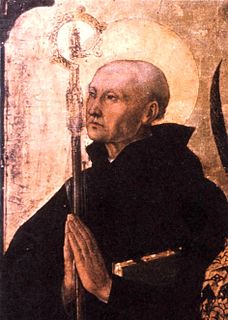
Severinus of Noricum is a saint, known as the "Apostle to Noricum". It has been speculated that he was born in either Southern Italy or in the Roman province of Africa. Severinus himself refused to discuss his personal history before his appearance along the Danube in Noricum, after the death of Attila in 453. However, he did mention experiences with eastern desert monasticism, and his vita draws connections between Severinus and Saint Anthony of Egypt.
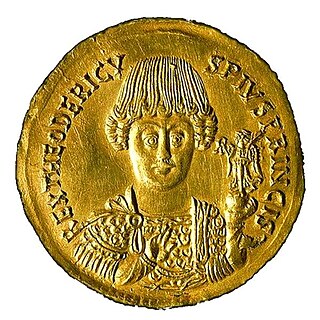
The Ostrogothic Kingdom, officially the Kingdom of Italy, was established by the Ostrogoths in Italy and neighbouring areas from 493 to 553.
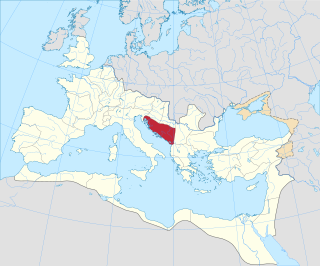
Dalmatia was a Roman province. Its name is derived from the name of an Illyrian tribe called the Dalmatae, which lived in the central area of the eastern coast of the Adriatic Sea. It encompassed the northern part of present-day Albania, much of Croatia, Bosnia and Herzegovina, Montenegro, Kosovo and Serbia, thus covering an area significantly larger than the current Croatian region of Dalmatia. Originally this region was called Illyria or Illyricum.

Epiphanius of Pavia (438–496), later venerated as Saint Epiphanius of Pavia, was Bishop of Pavia from 466 until his death in 496. Epiphanius additionally held the offices of lector, subdeacon and deacon.

The Turcilingi were an obscure barbarian people who first appear in historical sources as living in Gaul in the mid-fifth century and last appeared in Italy during the reign of Romulus Augustulus (475–76). Their only known leader was Odoacer (Odovacar).
Onoulphus, also Onoulf, Unulf and Hunulf was a general of the late fifth century of Scirian origin. He served as magister militum per Illyricum from 477 to 479 as a general of the Eastern Roman Empire, then afterwards was a general for his brother Odoacer, king of Italy, until their death.
Flavius Symmachus was a Roman politician during the Ostrogothic kingdom in Italy.

Odoacer's deposition of Romulus Augustulus, occurring in 476 AD, marked the end of the period during which Western Roman Emperors exercised sovereignty, although Julius Nepos exercised control over Dalmatia until 480. Romulus Augustulus was a 16-year-old minor at the time.
Tufa was a Germanic warrior active in 5th century Italy.
Frideric was the leader of the Germanic Rugians from 487 to 492/493.


